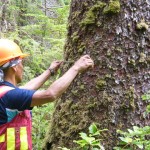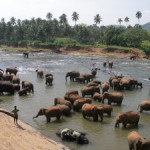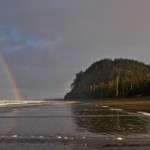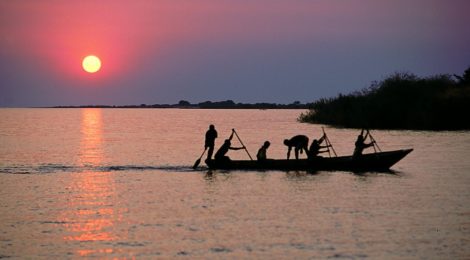
Bringing The Fish Back To African Lakes
In Africa The Consequence Of Global Warming Is Hunger Amongst The Fisherfolk Who Depend On Africa’s Great Lakes
The big lakes in Africa, like Tanganyika, have long supported and sustain lake shore humanity with an abundance of nutritious fish.
Today a consequence of global warming is big tropical lakes are becoming too warm at the surface resulting in the collapse of fisheries. Those who depend on fish for their survival are in peril.
We might argue about climate change for more decades or we might just do something that will immediately begin to feed millions of children in need. We can and we must bring back the fish!
Being one who is constantly thinking with my fish brain I have come up with an interesting new idea on behalf of bringing the fish back to the big lakes of Africa. My thinking has come as I’ve been asked many times about how to bring back the fish in freshwater systems. Being more of an ocean guy, this has led me to respond to people that my ocean pasture restoration concepts have no hope in such environments. But on second thought.
It came to me that wind and wave driven eco-pumps in big lakes might well effectively fight thermal stratification and in doing so work wonders in supporting, sustaining, and bring back fish populations to historic abundance. That’s my working hypothesis, next step is to just get on with doing it and measuring the success the best possible way, on the faces of well nourished children.

Lake Tanganyika one of the world’s largest lakes lies very near the Equator and is shared by 4 nations. It is an ideal candidate for immediate, practical, affordable mitigation to restore the lake’s plankton ecosystem and bring back its’ fish.
In the big lakes in Africa thermal stratification is resulting in terrible fish collapse as evidenced by widespread hunger amongst the people who have traditionally relied on lake fish. It would be immediately practical, affordable, and effective to hand build and deploy a few hundred to thousand wind/wave pumps I have on my drawing board to bring up water from below the shallow thermocline to restore and replenish surface fish populations.
This is near perfect working with Mother Nature technology that can be brought and taught to local people who with simple hand tools, needles, and thread can build and deploy the technology needed to save and restore their world at extremely low-cost.
The results will be proven almost instantly, within months to a year or few. The data to watch for and collect would include the immediate alleviation of hunger amongst children on the lake shore. Measurement of the amount of fat in the skin on their bellies will reveal true success. The cost to implement such a program effectively on Lake Tanganyika to prove its effectiveness might require a cost of perhaps a million dollars, provided one enlisted and hired the hand labour of a legion of locals. The ‘DIY’ program could be fully operational in less than a year bringing the fish back to feed the hungry multitudes.
Bringing back fish is what my life’s work is all about. In my 2012 Ocean Pasture Restoration project in partnership with a Canadian native people’s village our salmon restoration efforts just worked. The following year the fisherfolk of Alaska, closest to our restored ocean fish pasture expected to catch 50 million Pink Salmon, instead the catch was 224 million salmon, the largest catch in all of history.
From the vast surplus of that salmon catch the US Department of Agriculture started buying canned salmon for its food aid programs. My salmon has to date served a half a billion meals of healthy nutritious salmon to American children in need via USDA school food aid programs.
.
Scientific Publications Trumpet Danger To African Lakes
Many reports in the scientific literature attribute the decrease in fishery productivity in Lake Tanganyika since the 1950s to be a consequence of global warming rather than ‘usual suspect’ overfishing.
Records show that the lake was becoming warmer at the same time in the 1800s that the abundance of fish began declining. The lake’s phytoplankton – fish food – clearly started decreasing at that time. However, large-scale commercial fishing did not begin on Lake Tanganyika until the 1950s. That large-scale commercial fishing only lasted about 50 years, by 2000 the commercial fishing boats on the lake had become uneconomical to operate due to declining fish stocks. Today almost all the fishing on the lake takes place from small open boats, often paddled instead of powered.
One new finding, just published in PNAS, helps illuminate why the lake’s fisheries are foundering, said study leader Andrew S. Cohen, a UA Distinguished Professor of Geosciences.
“Some people say the problem for the Lake Tanganyika fishery is ‘too many fishing boats,’ but our work shows the decline in fish has been going on since the 19th century,” Cohen said. “We can see this decline in the numbers of fossil fish going down in parallel with the rise in water temperature.”
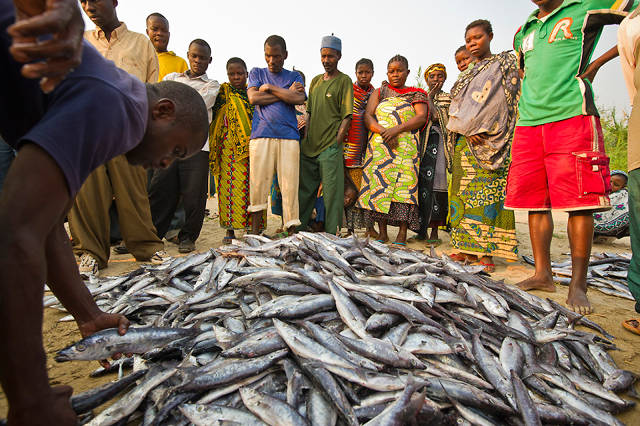 Lake Tanganyika yields up to 200,000 tons of fish annually and provides at least 60 percent of the animal protein for the region’s population, according to other investigators. Cohen and his co-authors acknowledge that overfishing is one cause of the reduction in catch. However, they state that sustainable management of the Lake Tanganyika fishery requires taking into account the overarching problem that as the climate warms, the phytoplankton – the foundation for the lake’s food web – will decrease.
Lake Tanganyika yields up to 200,000 tons of fish annually and provides at least 60 percent of the animal protein for the region’s population, according to other investigators. Cohen and his co-authors acknowledge that overfishing is one cause of the reduction in catch. However, they state that sustainable management of the Lake Tanganyika fishery requires taking into account the overarching problem that as the climate warms, the phytoplankton – the foundation for the lake’s food web – will decrease.
Lake Tanganyika fisheries declining from global warming
Lake Tanganyika’s industrial ‘purse seine’ fishing fleet operated in the late 20th century. This type of fishing became uneconomical 10-to-15 years ago because catches declined and people adopted less expensive catamarans for fishing. Credit: Andrew S. Cohen/ University of Arizona
Cohen and his colleagues figured out the lake’s environmental history 1,500 years into the past by taking cores of the lake’s bottom sediments and analyzing the biological and chemical history stored in the sediment layers.
The team’s findings have important conservation implications. The largest and deepest of Africa’s Rift lakes, Lake Tanganyika is famous for the great diversity of species unique to the lake.
“The lake has huge biodiversity – hundreds of species found nowhere else,” Cohen said.
The warming of the lake has reduced the suitable habitat for those species by 38 percent since the 1940s, the team found.
“The warming surface waters cause large parts of the lake’s floor to lose oxygen, killing off bottom-dwelling animals such as freshwater snails,” Cohen said. “This decline is seen in the sediment core records and is a major problem for the conservation of Lake Tanganyika’s many threatened species and unique ecosystems.”
The paper, “Climate warming reduces fish production and benthic habitat in Lake Tanganyika, one of the most biodiverse freshwater ecosystems,” by Cohen and his co-authors, is scheduled for online publication in the Proceedings of the National Academy of Sciences the week of Aug. 8, 2016. A complete list of authors and funders is at the bottom of this release.
Previous research by Cohen’s colleagues found Lake Tanganyika began warming in the mid-1800s and that the lake had warmed in the latter part of the 20th century faster than any similar time period since the year 500.
The lake’s fish production had also slumped in the latter part of the 20th century. Cohen has been studying the paleo-environment of Lake Tanganyika and the surrounding region for decades. He wondered whether the drop in fish productivity was from increased fishing or because the lake was getting warmer.
In tropical lakes, increases in water temperature reduce the seasonal mixing between the oxygenated top layer of the lake and the nutrient-rich but oxygen-free bottom layer of the lake, Cohen said. Fewer nutrients in the top layer mean less algae and therefore less food for fish.
In addition, as a tropical lake warms, the mixing doesn’t reach as far down into the lake. As a result, the oxygenated top layer becomes shallower and shallower. As the top layer gets shallower, the oxygenated area of the lake bottom shrinks, reducing habitat for bottom dwellers such as molluscs and arthropods.
The remains of fish, algae, molluscs and small arthropods are preserved in the annual layers of sediment deposited in the bottom of Lake Tanganyika. By examining cores from the bottom of the lake, Cohen and his colleagues reconstructed a decade-by-decade profile of the lake’s biological history going back 1,500 years.
Co-authors Elizabeth Gergurich and Jack Simmons analyzed parts of the cores during their independent study projects while undergraduates at the UA.
The team found that as the lake’s temperature increased, the amount of fish bits, algae and molluscs in the layers of sediment decreased. Based on instrumental records of oxygen in the lake water, the scientists calculated that since 1946 the amount of oxygenated lake-bottom habitat decreased by 38 percent.
“We’re showing the rising temperatures and declines in fish food are resulting in a decrease in fish production – less fish for someone to eat. It’s a food security finding,” Cohen said.
“We know this warming is going on in other lakes.”“It has important implications for food and for ecosystems changing rapidly. We think that Lake Tanganyika is a bellwether for this process.”
Read more at: http://phys.org/news/2016-08-lake-tanganyika-fisheries-declining-global.html#jCp
Join me, share your ideas on how to make this happen.





